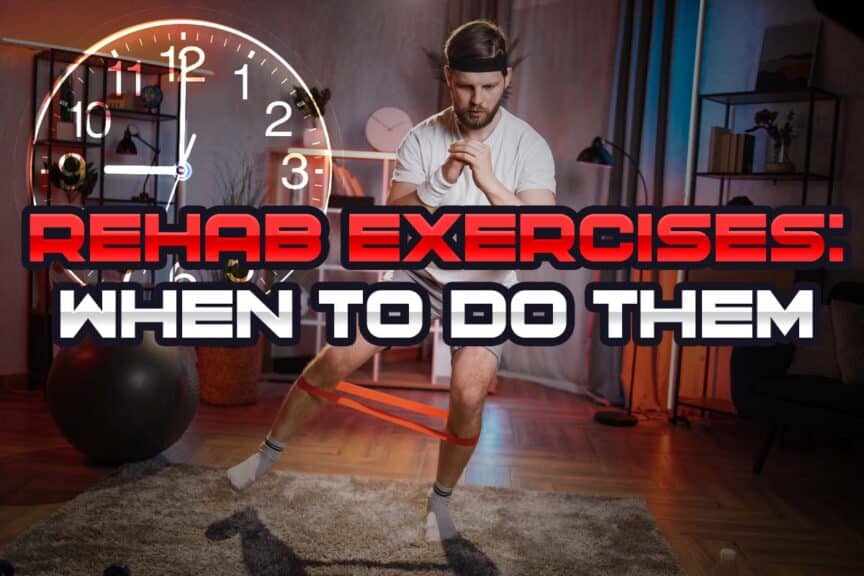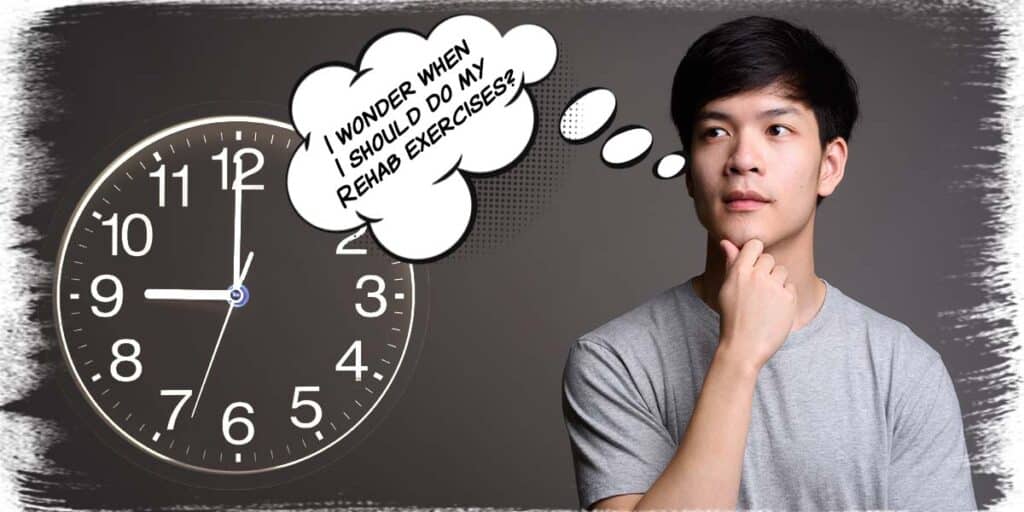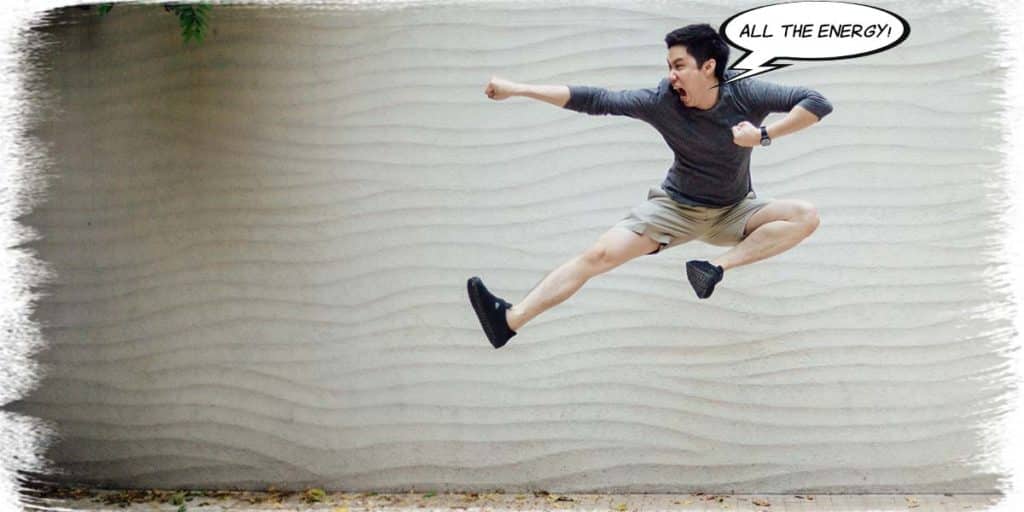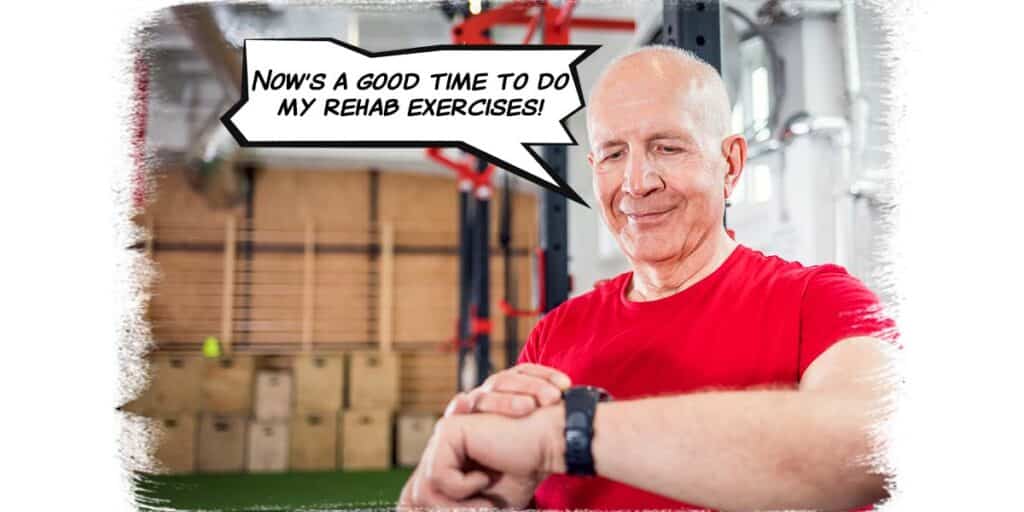An essential component of physical therapy is therapeutic and rehabilitative exercise. The body can almost always benefit from the correct types, amounts and frequencies of movement. But if you’re not quite sure what the best time of the day may be for performing these exercises, then fear not; this article will walk you through all you need to know when it comes to this critical topic.
The best time of day to do your physical therapy exercises is when you feel that your body will tolerate exercises and movements the best. Times of day that you have little or no fatigue are also ideal. If possible, avoid times where your body will be more stiff, sore or painful for your movements.
If you’re curious to know more, including the specifics mentioned in the above paragraph, then keep on reading!
ARTICLE OVERVIEW (Quick Links)
Click/tap on any of the following headlines to jump to that section of the article!
• Why it’s important to pick the best time of day
• How to choose the best time of day for your body
• Factor 1: Understanding pain patterns
• Factor 2: Dealing with fatigue
• Factor 3: Busy schedules
• Factor 4: Navigating flare-ups
• Final thoughts
Disclaimer: While I am a physical therapist, I am not YOUR physical therapist. As a result, I cannot tell you whether or not any treatments mentioned on this website may or may not be appropriate for you, including when to perform your physical therapy exercises. By following any information within this post, you are doing so at your own risk. You are advised to seek appropriate medical advice for any pain you may be experiencing.
Related article: Physical Therapy Exercises: Here’s How to Stick to Them for Success
Why it’s important to pick the best time of day
Rehabilitative exercise is all about consistency and sustainability; it often takes a prolonged length of time and effort to reap the rewards of your exercises, but the payoff can absolutely be worth it. So, throughout the sometimes lengthy process, you don’t want to contend with additional challenges that could derail you with either your weekly consistency or the sustainability of doing your exercises altogether.
The most successful outcomes with therapeutic exercise occur when you can perform your exercises consistently while avoiding any unnecessary unpleasantness in the process.
While it’s not always enjoyable to perform your physical therapy exercises, making the process as enjoyable and sustainable as possible will maximize your chances of recovery.
No one wants to do their exercises when they have elevated pain levels, are too fatigued to perform them or are too busy to make time for them. Such factors only create more of an uphill battle in terms of overall rehabilitative success since any one of these issues may prevent you from doing your exercises.
Related article: Here’s How Often You Should Be Doing Your Physical Therapy Exercises
Thankfully, picking the right time of day for when to do your exercises can make a massive difference in these types of factors, allowing you to avoid additional unpleasantness while maybe even enjoying the process a bit more along the way.
So, let’s look at how you can pick the best time of day for any rehabilitative or functional exercises you may need to do!
How to choose the best time of day for your body
Here are some critical factors to be mindful of when picking the best time of day for you to exercise:
Factor 1: The time in the day when your body feels best
The effects of different injuries, conditions and diseases are often more prominent or noticeable at different times throughout the day. As a brief example, conditions such as osteoarthritis are sometimes more painful at the end of the day, with the earlier portion of the day being less painful.1
Other conditions such as plantar fasciitis, tendinosis and rheumatoid arthritis can often feel worse at the start of the day and feel a little bit better as you begin to move around for your daily activities.2–4 As a result, you’ll want to take note of which time(s) of the day you feel best and when you feel the worst.
If your exercises are designed strictly to reduce pain, you may feel that they’re more effective if you perform them at times of the day when your pain is more intense or more noticeable.
Factor 2: The time in the day when you have adequate energy
For many individuals, pain isn’t as much of an issue as it is maintaining (or improving) the overall functional abilities of their body (maintaining strength, endurance, mobility, etc.). As a result, an individual often isn’t limited by the best time of day to exercise from a pain perspective but rather from an energy-availability perspective.
Certain conditions and diseases can be very taxing on the body (for numerous reasons). They can impair the energy levels in the body. As a result, it’s not uncommon for many conditions such as multiple sclerosis and post-polio syndrome (among many, many others) to produce these fatigue-related exercise challenges, as they can create high levels of fatigue within the body throughout different points of the day.5,6
Related article: Pro Advice: Find the Best Physical Therapist For You With These Tips
Performing therapeutic exercise when experiencing high levels of physical or cognitive fatigue can be incredibly challenging to do. With either (or both) types of fatigue, it can be tough to complete exercises with the appropriate amount of physical challenge required or with safe, effective, and overall proper technique.
If you are someone who is often limited by physical or cognitive fatigue, performing your exercises at the time of day when this fatigue is at a minimum will provide your best chances of success with getting the most out of your exercises while minimizing excessive fatigue in the process.
If you notice that there are times throughout the day when you have a noticeable increase in your fatigue, it may then be worth trying to avoid your exercises during these points and instead opt for doing them when you have optimal (or, at least, adequate) energy levels.
Factor 3: The time in the day when you have the available time
Not everyone is limited by fluctuating pain levels (factor 1) or energy levels (factor 2). For plenty of individuals who are trying to recover from pain, injury or dysfunction, the best time of day to perform your physical therapy exercises is simply whenever you have the available time to do so.
As a result, it’s just a matter of finding — or even making — the time required to get your exercises done. If you constantly operate with a busy schedule, it’s not a bad idea to carve out some specific time in your schedule to ensure you get them completed.
As someone who routinely has a busy, non-stop schedule, I always prefer to get my exercises done and “out of the way” in the morning whenever possible. This is a strategy I often recommend to my patients, as this can help free up the back end of your day or prevent you from missing the exercises that you had planned on doing in the evening before an unexpected event interferes with doing so.
Factor 4: Navigating pain and disease-based flare-ups
It’s important to be aware of the fact that different injuries, diseases and conditions can cause periods in which pain or dysfunction worsens by a noticeable extent. This is often referred to as a flare-up and can happen for numerous reasons (beyond the scope of this article).
When pain or dysfunction flares up, you may need to work around the resultant issue rather than through it. This means that you may have to alter the time of day in which you usually or preferably complete your physical therapy exercises. While this can be a bit of a nuisance, it’s wise to consider changing to a time of day in which your flare-up is at it its least noticeable effect.
As well, keep in mind that depending on the nature of your condition and its respective flare-up, you may need to alter your exercises or forego them altogether until the flare-up subsides. Be sure to speak to your physical therapist or qualified medical professional to determine any changes that you may need to make for the time being.
Related Article: The MASSIVE Benefits of Going to Physical Therapy Before Injury
Final thoughts
While the conditions will be different for each individual when determining the best time of day to complete one’s physical therapy exercises, the four main factors within this article can be a strong starting point when better understanding and determining an ideal time of day for your to complete your exercises.
If you’re still uncertain as to what may be best for your needs, make sure to speak to your physical therapist and ask them what they recommend, as they will be able to provide specific insight and help you select a time of day that is best for you.
References
1. Fayet M, Hagen M. Pain characteristics and biomarkers in treatment approaches for osteoarthritis pain. Pain Manag. 2021;11(1):59-73.
2. Goff JD, Crawford R. Diagnosis and treatment of plantar fasciitis. Am Fam Physician. 2011;84(6):676-682.
3. Wilson JJ, Best TM. Common overuse tendon problems: a review and recommendations for treatment. Am Fam Physician. 2005;72(5):811-818.
4. Grassi W, De Angelis R, Lamanna G, Cervini C. The clinical features of rheumatoid arthritis. Eur J Radiol. 1998;27:S18-S24.
5. Bakshi R. Fatigue associated with multiple sclerosis: diagnosis, impact and management. Mult Scler J. 2003;9(3):219-227.
6. Bruno RL, Cohen JM, Galski T, Frick NM. The neuroanatomy of post-polio fatigue. Arch Phys Med Rehabil. 1994;75(5):498-504.

Hi! I’m Jim Wittstrom, PT, DPT, CSCS, Pn1.
I am a physical therapist who is passionate about all things pertaining to strength & conditioning, human movement, injury prevention and rehabilitation. I created StrengthResurgence.com in order to help others become stronger and healthier. I also love helping aspiring students and therapists fulfill their dreams of becoming successful in school and within their clinical PT practice. Thanks for checking out my site!







